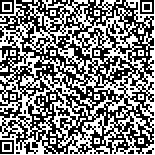下载中心
优秀审稿专家
优秀论文
相关链接
摘要

利用震灾前可具备的光学图像与震灾后卫星SAR图像的信息融合,可检测与评估震灾区地表面建筑物破坏状态。本文根据震灾前光学图像的建筑物特征参数,通过SAR成像仿真算法,模拟各建筑物SAR图像,根据震灾后SAR真实图像与SAR仿真图像互信息量的比较,综合利用归一化互信息量、梯度互信息量、区域互信息量及检测与评估建筑物破坏状态。采用2010年海地地震灾前的IKONOS光学图像、灾后COSMO-SkyMed与RADARSAT-2的星载SAR图像,进行震灾后建筑物破坏状态检测与评估。其结果与震灾后GeoEye光学图像进行了验证,证明了本文方法的可行性。
Quick and accurate evaluation of the building damages after earthquake in urban area is a critical issue for timely assessingthe disaster situation and effectively carrying out rescue mission. Very High Resolution (VHR) optical image is usuallya direct way to visually monitor natural disaster occurrence. However, under some serious situations, such as bad weather or difficultgeographic conditions, the post-event VHR optical image is not always available over large areas. All day and all weatherspace-borne Synthetic Aperture Radar (SAR) in operation can provide the reliable and high quality images over a large area. Ofcourse, the relationship between optical image and SAR image is not simply a one-to-one visual correspondence. Microwavescattering and penetration through terrain media, and image speckles of SAR observation with a certain resolution are differentfrom VHR optical imaging. How to make fusion of VHR optical and SAR images under different pre-event and post-event situationscan provide a useful and operational approach to make timely and accurate evaluation of earthquake losses.

